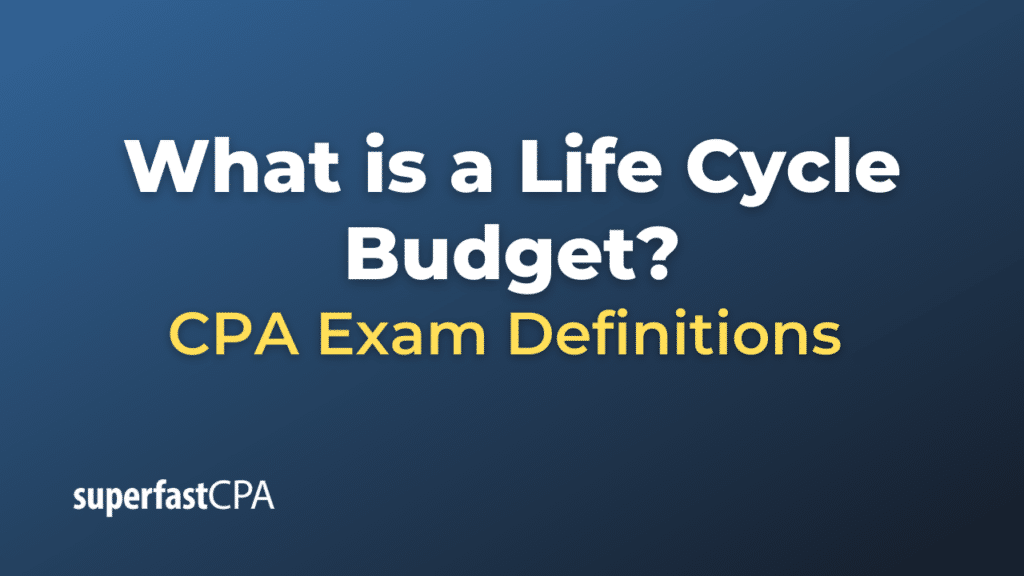Life Cycle Budget
A life cycle budget, also known as a life cycle cost analysis, is a method of cost estimation used to assess the total cost of owning, operating, and maintaining a product or system over its entire life span. This includes everything from the initial purchase price or production costs to the costs of operation, maintenance, upgrades, and finally, disposal.
The idea behind a life cycle budget is to take a comprehensive view of all the costs associated with a product or system, not just the upfront price. By understanding all these costs, a business or individual can make more informed decisions about whether to invest in a particular product, project, or asset.
For example, a company looking to purchase a new piece of machinery might look not only at the initial purchase price but also the energy efficiency, the cost of any needed parts or maintenance, the estimated lifespan of the machine, and the disposal cost at the end of its life. All these factors are taken into consideration in the life cycle budget.
Life cycle budgeting can be used for various decisions, including comparing different investment options, budgeting for the costs of a long-term project, deciding whether to replace or repair an existing asset, or determining the pricing for a product or service to ensure it covers all associated costs.
Example of a Life Cycle Budget
Let’s consider an example of a company planning to purchase a new industrial printer.
Option 1: Printer A – Printer A has a lower upfront cost of $10,000. However, it’s known to have higher maintenance costs of around $1,000 per year, consumes $500 worth of energy annually, requires $300 worth of ink per year, and is expected to last 5 years before it needs to be replaced.
Option 2: Printer B – Printer B has a higher upfront cost of $15,000. It’s a more modern model with lower maintenance costs of $500 per year, consumes $300 worth of energy annually, requires $200 worth of ink per year, and is expected to last 8 years before it needs to be replaced.
Using a life cycle budget, the company can calculate the total cost of ownership for each printer:
Printer A:
- Initial cost: $10,000
- Maintenance cost for 5 years: $1,000 * 5 = $5,000
- Energy cost for 5 years: $500 * 5 = $2,500
- Ink cost for 5 years: $300 * 5 = $1,500
- Total cost for 5 years = $10,000 + $5,000 + $2,500 + $1,500 = $19,000
Printer B:
- Initial cost: $15,000
- Maintenance cost for 8 years: $500 * 8 = $4,000
- Energy cost for 8 years: $300 * 8 = $2,400
- Ink cost for 8 years: $200 * 8 = $1,600
- Total cost for 8 years = $15,000 + $4,000 + $2,400 + $1,600 = $23,000
By looking at these life cycle budgets, the company can see that although Printer B has a higher upfront cost, its total cost of ownership over its lifespan is actually lower when factoring in maintenance, energy, and ink costs. Therefore, Printer B may be the more cost-effective choice in the long run.
This is a simplified example and doesn’t take into account things like the time value of money, opportunity costs, or the potential for unexpected breakdowns or repairs. However, it does demonstrate the basic principle of life cycle budgeting.














